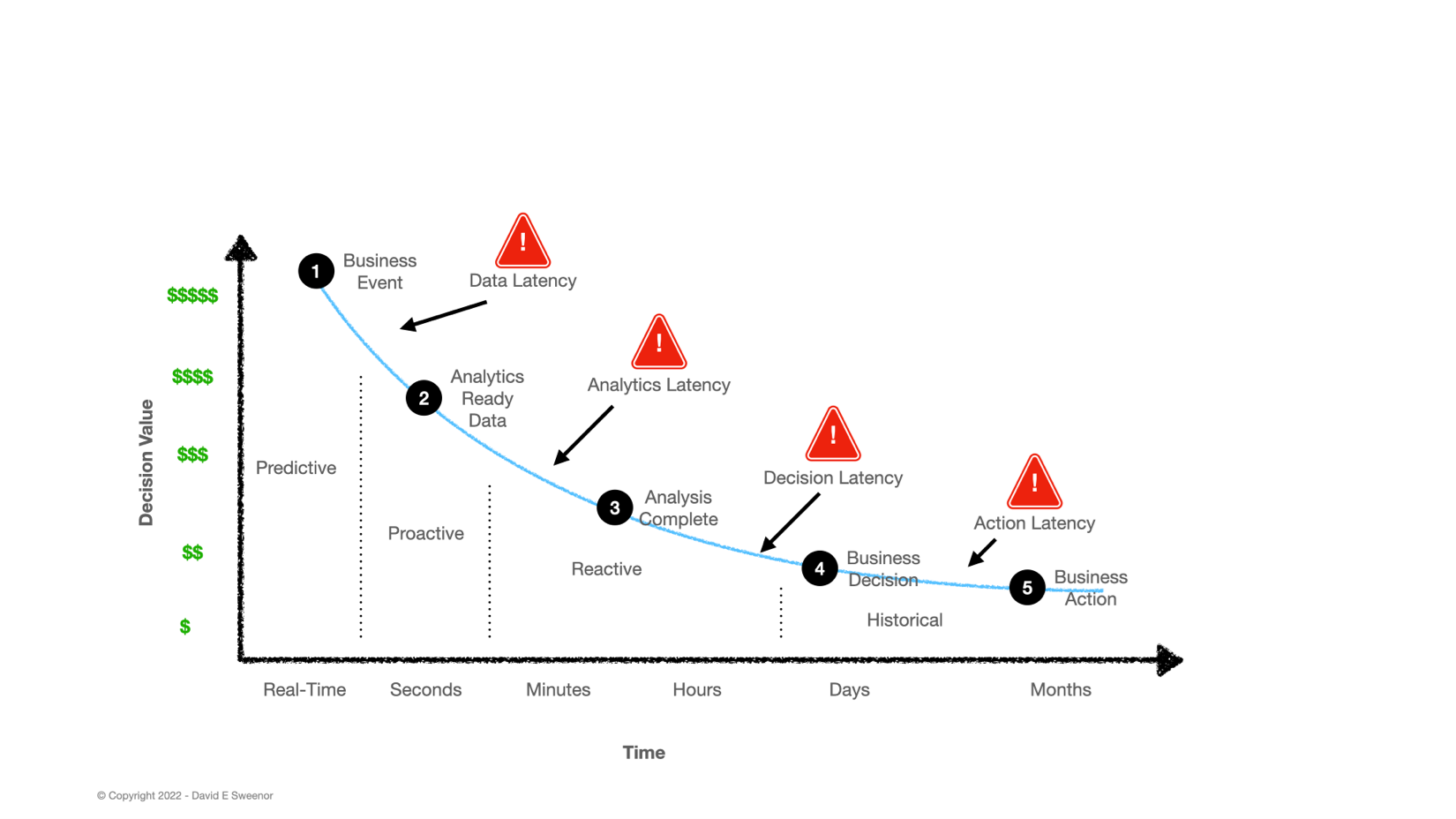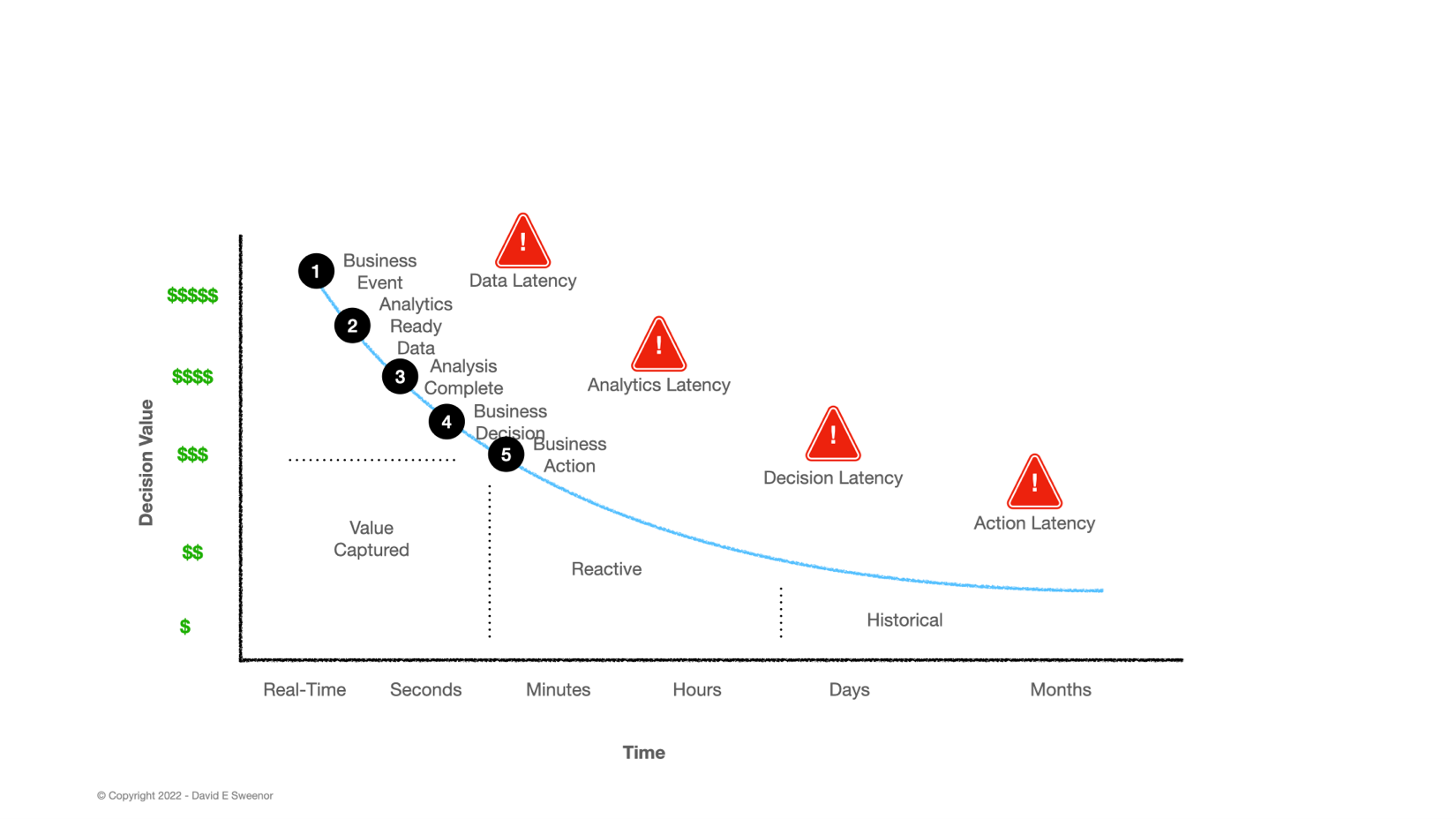Think about the role of analytics in the decision-making process in your organization. Does it seem to you that analytics are being used efficiently or effectively? Or can you see ways in which precious time and resources are being wasted?
In an economy where managers lose more than a half-million days per year on ineffective decision making, the opportunity to reduce waste is huge at all levels.
You’re not alone when you suspect that your organization has picked the wrong business partner or skated to where the puck used to be. Maybe the problem is that you rely too much on consensus, your roles are unclear, your data is obsolete, or — the one I’ll describe below — your culture lacks empowerment.
In any case, one big reason why an organization’s decision-making process is ineffective is that they haven’t automated their analytics at scale. The waste in the system leads to slow, ineffective decision making.
Anatomy of a decision
Next, think about the different types of decisions that your organization makes. For example:
- Strategic (Should we acquire a company?)
- Tactical or cross-cutting (What is an acceptable level of insurance risk?)
- Operational (What is the next-best offer we can make to a customer?)
Behind every type of decision, there is a sequence of steps that goes something like this:
Business Event –> Analytics-Ready Data Stored –> Analysis Complete and Information Delivered –> Business Decision Made –> Business Action Taken
The more closely those steps follow one another, the quicker you can go from a business event like a change in the competitive landscape to a business action like a marketing campaign. But how often does that happen quickly in your organization? Aren’t there almost always bottlenecks and points of latency and friction that slow the transition from one step to the next?
When you think about decision making in the context of those steps, you realize that the information value of data is perishable, and it decays with time. If you remove the analytics waste from your decision-making process, you can become much more competitive.
Four types of analytics waste
People in your organization are constantly using analytics to generate insights about customer churn or commodity prices or the effect of interest rates. The analytics may be in advanced, predictive tools that highlight evolving trends, or they may be in traditional tools like spreadsheets.
What happens to those insights? In far too many instances, the analysis is completed, and the information is delivered, but then what? It will probably be stored someplace and re-analyzed a few weeks or months later when the time to act and make a business decision will be long past.
Here’s how that looks:

Given that the information-value of data is perishable, each red triangle of latency — whether around data, analytics, decision, or action — is an obstacle to your competitiveness. Those points of latency add up to the delay you face in getting from business event to business action. They represent the analytics waste in your organization.
So, what can you do about them?
4 steps to get rid of analytics waste
When you think of decision obstacles as a function of latency, your next goal is to examine each type of latency and figure out what’s causing the analytics waste.
- Data latency occurs when people who need access to the data cannot get that access. Data access and sharing should be the norm, not the exception. Eliminate analytics waste by moving away from batch orientation and towards a more real-time architecture. For example, the retailer that monitors inventory levels across stores only once a day risks running out of stock and losing money in a sudden storm or holiday rush.
- Analytics latency can arise even after you’ve solved for data latency. Are you getting bogged down because you have to rely on specialists to analyze your data and get back to you? Data scientists and specialists are prized for working on a few high-value projects every year, so it will likely be a while before they can work on your task. Here, the answer lies in empowering everyone in the organization, regardless of skill level, to participate in the data and analytics process. While your data scientists are focused on a few big-ticket problems, the people in the business operate where the data is generated and can focus on lots of little problems. But they need data literacy, upskilling and easy-to-use software.
- Decision latency can crop up if decision makers are hobbled by non-intuitive, inscrutable dashboards and reports. Even if people are empowered to make decisions, can they look at the information displayed right in front of them and know that a decision needs to be made? There are three parts to addressing this:
- Revaluate the process. Does a human need to be in the loop? Can you simply automate the decision by issuing a purchase order or sending email authorization?
- Decentralize decision making. Empower those who are closest to the problem (and the data) to make decisions without needing approvals.
- Get the right insights to the right decision maker at the right time. This is an efficiency problem; part of the solution lies in organizational process and part of it lies in software.
- Action latency refers to your organization’s agility once a decision has been made. Are you capable of responding quickly enough to take advantage of favorable conditions? You can aspire to rely more on predictive analytics, for example, but what’s the point if your organizational processes are old, brittle, and labor-intensive? The solution is to introduce more analytic automation to processes. That means that if analytics show your Toronto store will run out of beige widgets tomorrow, all business processes are in place to ship inventory before then. The more you can automate those processes, the sooner you can turn your attention to higher-value tasks.
The role of people
Analytics automation is at the heart of removing analytics waste. Paradoxically, though, the more people you involve in your analytics effort, the sooner you can remove the waste and the latency. Here’s why.
As described above, your data scientists’ priority is high-profile projects intended to make a measurable difference on your bottom line. Your isolated market forecasting problem seems urgent; however, it’s not an enterprise-wide concern, so it will have to wait for data science resources.
But what if your marketing analysts or operations experts had the ability to run analytics on the data? They may not understand data science and programming languages, but they know the business and they know which actions are open to them. That’s better than taking a number with the data science team and having to wait. It turns out that you have plenty of citizen data scientists hiding in plain sight — untapped potential that’s already in your organization.
When people are close to the business and empowered to make decisions, they can use easily accessible data and analytics to solve countless small problems. You can make more progress by empowering people who:
- are close to the data
- are inclined toward analytics
- want to participate in the process of removing analytics waste
- will embrace the opportunity for upskilling with intuitive, low-code/no-code tools
Conclusion: More effective decision making
As you eliminate latency and remove analytics waste, you capture more of the perishable information value of the data described above. Over time, your curve begins to look like this:

You compress the sequence of steps and move it upward and to the left toward real-time decision making and high value. Your organization can make better decisions more quickly when you upskill the business managers, analysts, and citizen data scientists who have their fingers on your data.
See how analytics automation helps to create an agile organization that can better serve its customers and clients while improving financial success. Read our e-book, “Automating Analytics: A Human-Centered Approach to Transformative Business Outcomes.”